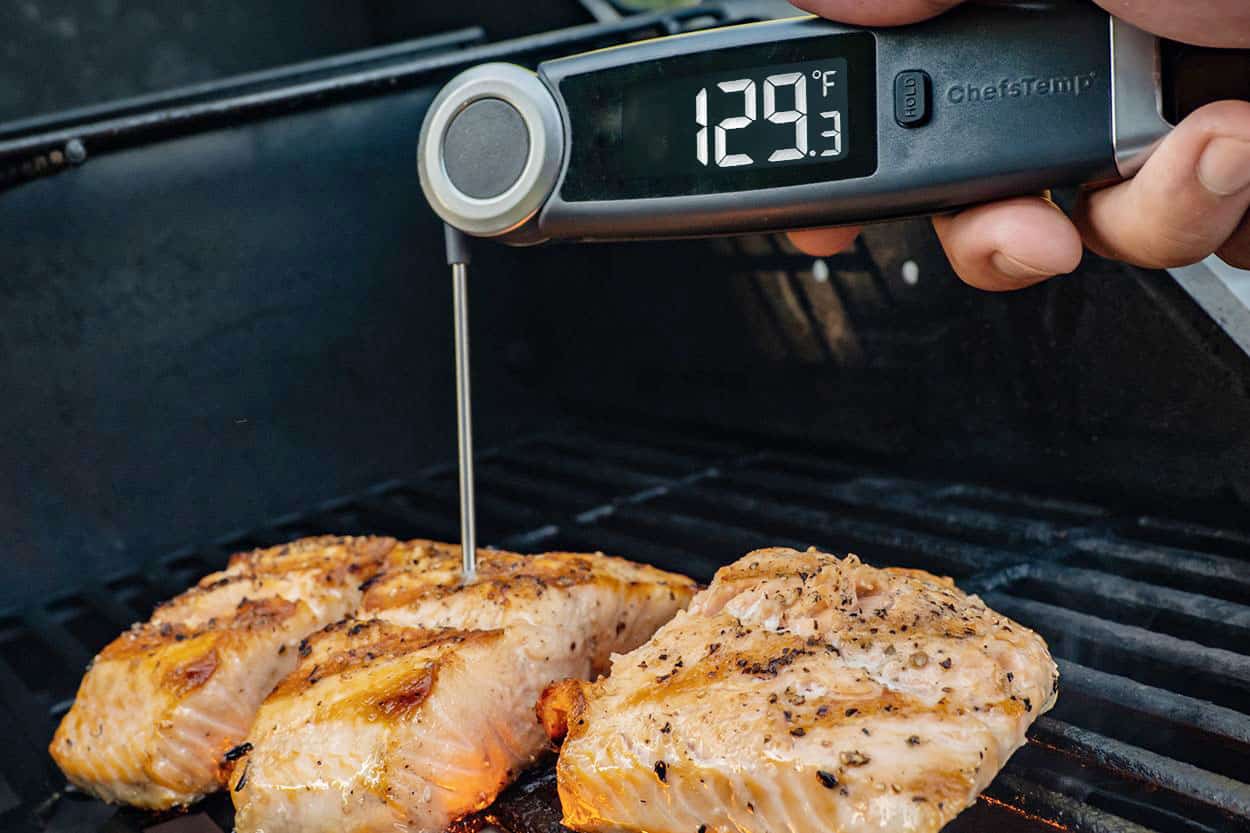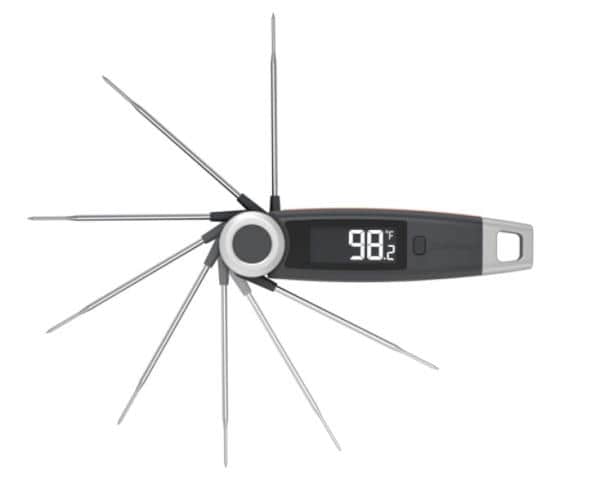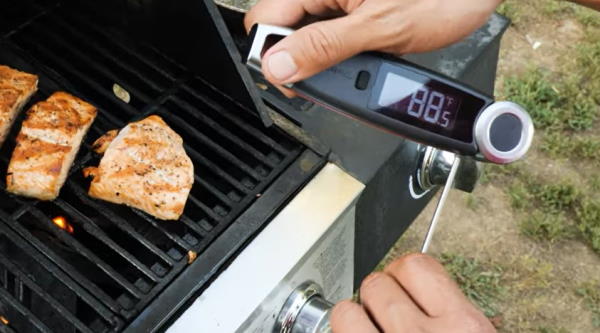
How to Use an Instant Read Digital Meat Thermometer Correctly
The old saying “a tool is only as good as the hands that wield it” couldn’t be more applicable to meat thermometers. While food thermometers can help any cook do wonders in the kitchen, it needs to be used correctly to be of help. In this guide, you will learn how to use an instant read thermometer correctly.
Digital meat thermometers are lifesavers in the kitchen. They take the guesswork out of cooking meat, regardless of whether you’re grilling, roasting, broiling, pan/stir-frying, etc. While some people simply just have a knack for cooking meat, for the majority of people, having this handy tool is a must, especially when preparing food for a large group of people. This is why even professional chefs use food thermometers – to make sure the meat is perfectly cooked, not over or undercooked.
Table of Contents
When to use a meat thermometer?
The great thing about meat thermometers is that they are extremely versatile tools. You can use it for roasting, grilling, deep-frying, etc. However, the best way to probe the temperature of the meat is to insert the thermometer towards the end of cooking, about ten minutes before the end of the cooking time.
The advantage of instant-read thermometers
Instant read thermometers, as their name suggests, provide instant, accurate, and convenient temperature readings of your meat. They can give you an accurate temperature reading inr as fast as two to five seconds.
Thermocouple thermometer
A thermocouple thermometer comes equipped with an extremely thin tip that can easily be inserted into any slice of meat, whether it’s a thin or a thick cut. They are easy and quick to use and widely regarded as the most accurate. However, they also have a reputation of being quite expensive compared to their counterparts.
Also, thermocouple thermometers are not designed to remain in the food while cooking. Thus, they are better for probing the temperature of the steak, rather than say, a turkey, or a rack of lamb.

Digital instant-read thermometers
Digital instant-read thermometers, on the other hand, can provide a fast response time (temperature reading). They are also light, compact, and super easy to use, making your life in the kitchen a lot easier. Though not as fast as many thermocouple thermometers, they are a lot cheaper and can be left in the food while it is being cooked.
Many types of digital instant-read thermometers come with a corded probe that can be left in the food while the thermometer reader stays outside. Some models even have a function that sets off an alarm when the meat gets to the pre-set temperature. Some can be connected to your phone via an app and send you a notification message when it’s time to check your meat or take it out of the oven. This type of thermometer is great for cooking meat in the oven, stove, or grilling.
How to use an instant read thermometer?
To get the most accurate internal temperature reading of your meat, insert the thermometer into the thickest portion of the meat. The core of the meat will give you the lowest internal temperature for an accurate reading when cooking. Make sure the tip of the thermometer is not touching the bone or fat of the meat.
Most thermometers must be inserted at least half an inch into the meat. For thicker cuts of meat, however, you have to go deeper. The rule of thumb is to get the tips of the rod into the center.

When inserting the thermometer into the meat, you should see a drop in temperature as you go deeper and close to the center. If you see the temperature rising, you may have gone too far.
If you are not sure where and how to insert the thermometer into the meat, you can check USDA’s tips on where to insert the food thermometer for each kind of food. They have quite a comprehensive guide on where to place meat thermometers for beef, pork, lamb, and poultry meats, thin foods, combination dishes, etc.
If you are cooking a whole chicken, insert the thermometer into the thigh. This is the thickest part of the meat. Again, make sure you avoid hitting the bone.
If you are cooking a rack of lamb, or ribs, insert your thermometer iinto the center, away from the bone or gristle of the meat cut.
Check early and often
If you are roasting meat for several hours, check your meat at least 30 minutes before the expected cooking time is over. For smaller and thinner cuts of meat, test around 5 to 10 minutes ahead of time.
To get the right doneness of the meat, make sure you aim for the temperature of the meat provided in your recipe. However, note that the meat will continue to cook even after you remove it from the heat. It’s called carryover cooking, and you can use this to your advantage. You can actually take the food away from the heat just before it reaches its target internal temperature. That’s around 5 to 10 °F (3 to 6°C) lower.
When you remove the meat from the heat and rest it for about 10 minutes, youl allow the steak to cook gently and distribute its juices all through the meat. This keeps your meat from drying out after cooking. Thus, make sure you don’t poke your meat too much with your thermometer, or it will drain the juices out of the meat.
Calibrate and care for your thermometer
Do you really need to calibrate your instant-read digital meat thermometer?
Well, yes, but only if you believe it is off. If you suspect that its temperature reading is off, then test it by putting it in a glass of iced water for about 30 seconds. Make sure the tip of the thermometer doesn’t touch the bottom of the glass.
If the thermometer shows 32°F (0°C), then it’s working just fine. If it’s not, you can refer to the owner’s manual for instructions on how to properly calibrate it.
And as with most cooking tools in the kitchen, you should wash your thermometer with warm soapy water by hand. Be very careful when cleaning your food thermometer, most models have plastic components (in the receiver) that can melt when placed or dropped in a hot liquid. Glass thermometers should be stored in their packaging, while thermometers with sharp probes must be kept with their probe in a stem sheath.
Discover Other ChefsTemp Products
Discover more recipes and learn kitchen tricks by joining our cooking family on Facebook.
You may also like:















